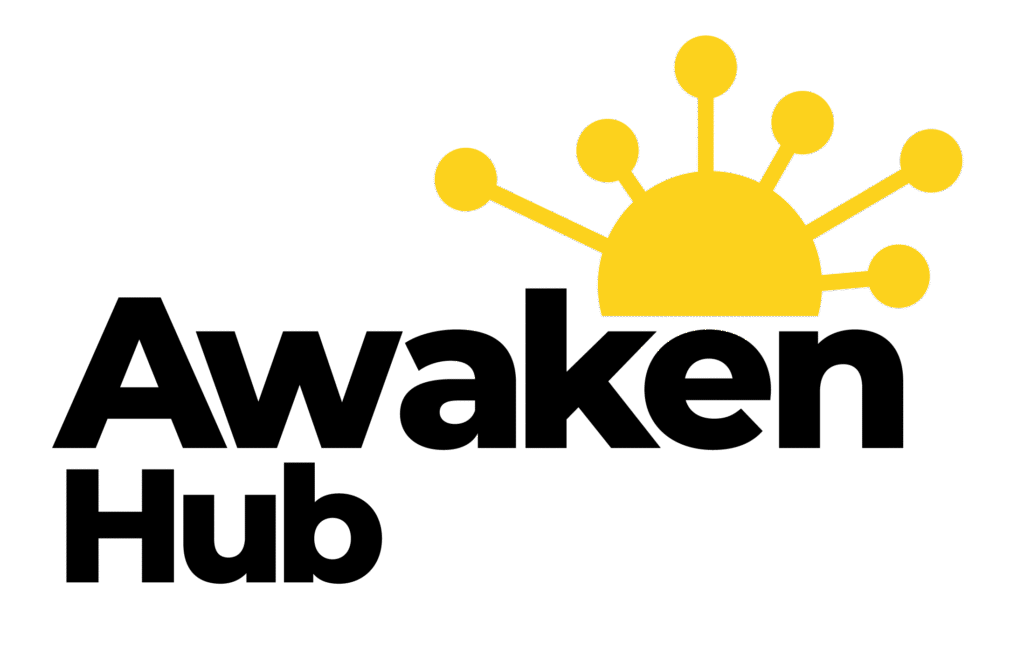Exploring the Best Ad Placement Strategies for British Businesses
To effectively engage with your audience, it is crucial to first understand who they are. This involves delving into their…
To effectively engage with your audience, it is crucial to first understand who they are. This involves delving into their demographics, interests, and behaviours. By identifying the age, gender, location, and preferences of your target market, you can tailor your marketing strategies to resonate with them.
For instance, if your audience consists primarily of young adults, you might focus on platforms and content that appeal to their lifestyle and values. Conducting surveys, analysing customer data, and engaging in social listening can provide valuable insights into what drives your audience’s decisions. Moreover, understanding your target audience goes beyond mere demographics; it also encompasses their motivations and pain points.
What challenges do they face that your product or service can solve? By addressing these issues in your marketing efforts, you can create a more compelling narrative that speaks directly to their needs. This empathetic approach not only fosters a deeper connection but also enhances the likelihood of conversion.
Ultimately, the more you know about your audience, the better equipped you will be to craft messages that resonate and inspire action.
Summary
- Understanding the target audience is crucial for effective advertising
- Utilising social media platforms can help reach a wider audience
- Embracing traditional advertising channels can still be effective in reaching certain demographics
- Leveraging influencer marketing can help build credibility and reach new audiences
- Exploring native advertising opportunities can seamlessly integrate ads into content for a more natural feel
- Maximising search engine marketing can increase visibility and drive traffic to your website
- Implementing geotargeted ad campaigns can help tailor ads to specific locations for better relevance
- Measuring and analysing ad performance is essential for understanding the effectiveness of advertising efforts
Utilising Social Media Platforms
Maximising Reach and Impact
By strategically selecting the right platforms for your brand, you can maximise your reach and impact. Regularly posting engaging content, such as videos, infographics, and interactive polls, can help maintain audience interest and encourage sharing.
Fostering a Sense of Community
Engaging with followers through comments, direct messages, and live sessions fosters a sense of community and loyalty. By responding to queries and feedback promptly, you demonstrate that you value their opinions and are committed to providing excellent customer service.
Building Trust and Authenticity
Furthermore, leveraging user-generated content can enhance your brand’s authenticity and credibility. Encouraging customers to share their experiences with your products not only showcases real-life applications but also builds trust among potential buyers.
Embracing Traditional Advertising Channels

While digital marketing has gained prominence in recent years, traditional advertising channels should not be overlooked. Television, radio, print media, and outdoor advertising still hold significant value in reaching certain demographics. For example, if your target audience includes older adults who may not be as active online, investing in television or radio ads could be a more effective strategy.
These channels often provide a sense of familiarity and reliability that can enhance brand recognition. Moreover, traditional advertising can complement your digital efforts by creating a cohesive marketing strategy. For instance, a television ad can drive viewers to your social media pages or website for more information.
By integrating both traditional and digital channels, you can create a multi-faceted approach that maximises exposure and reinforces your brand message. Additionally, consider the timing and placement of your ads to ensure they reach your audience when they are most receptive. A well-timed advertisement can significantly increase its effectiveness and lead to higher engagement rates.
Leveraging Influencer Marketing
| Metrics | Data |
|---|---|
| Number of Influencers | 50 |
| Average Engagement Rate | 5% |
| Reach of Influencer Campaign | 1,000,000 |
| Conversion Rate | 10% |
Influencer marketing has emerged as a powerful strategy for brands looking to connect with their target audience authentically. By collaborating with influencers who align with your brand values and have a genuine following, you can tap into their established trust and credibility. This approach allows you to reach potential customers in a more organic manner than traditional advertising methods.
When selecting influencers, consider their engagement rates and the relevance of their content to ensure a good fit for your brand.
This versatility allows you to experiment with different approaches to see what resonates best with your audience.
Additionally, influencers often have insights into their followers’ preferences and behaviours, which can inform your marketing strategies. By leveraging their expertise, you can refine your messaging and create campaigns that are more likely to drive engagement and conversions.
Exploring Native Advertising Opportunities
Native advertising presents a unique opportunity to promote your brand in a way that feels less intrusive than traditional ads. By seamlessly integrating promotional content into the user experience of a platform—such as sponsored articles or videos—you can engage your audience without disrupting their browsing experience. This approach not only enhances user engagement but also increases the likelihood of content sharing among users who find it valuable.
When exploring native advertising opportunities, it is essential to ensure that the content aligns with the platform’s style and tone. Authenticity is key; if users perceive the content as overly promotional or out of place, it may lead to negative perceptions of your brand. Additionally, consider collaborating with publishers or platforms that share your target audience to maximise the effectiveness of your native ads.
By providing valuable information or entertainment through native advertising, you can build trust with potential customers while subtly promoting your products or services.
Maximising Search Engine Marketing

Search engine marketing (SEM) is an essential component of any comprehensive digital marketing strategy. By utilising paid search ads on platforms like Google Ads, you can increase visibility for your brand when potential customers search for relevant keywords. This targeted approach ensures that your ads are displayed to users actively seeking products or services similar to yours, resulting in higher conversion rates.
To maximise the effectiveness of your SEM campaigns, it is crucial to conduct thorough keyword research. Identifying high-traffic keywords that align with user intent will help you create compelling ad copy that encourages clicks. Additionally, regularly monitoring and optimising your campaigns based on performance metrics will allow you to refine your strategy over time.
A/B testing different ad variations can provide insights into what resonates best with your audience, enabling you to allocate resources more effectively.
Implementing Geotargeted Ad Campaigns
Geotargeting is a powerful tool that allows you to deliver tailored advertisements based on users’ geographical locations. This strategy is particularly beneficial for businesses with physical locations or those offering location-specific services. By targeting users in specific regions or cities, you can ensure that your ads reach individuals who are more likely to convert due to proximity or relevance.
When implementing geotargeted ad campaigns, consider the unique characteristics of each location. Customising your messaging to reflect local culture or events can enhance engagement and make your brand more relatable to the audience. Additionally, utilising location-based promotions or offers can incentivise users to visit your store or website.
By leveraging geotargeting effectively, you can create a more personalised experience for potential customers while driving foot traffic and online conversions.
Measuring and Analysing Ad Performance
To ensure the success of your advertising efforts, it is vital to measure and analyse performance regularly. By tracking key performance indicators (KPIs) such as click-through rates (CTR), conversion rates, and return on investment (ROI), you can gain valuable insights into what is working and what needs improvement. Utilising analytics tools allows you to gather data from various channels and campaigns in one place for easier analysis.
Moreover, analysing ad performance should not be a one-time task; it requires ongoing evaluation and adjustment based on the data collected. Identifying trends over time can help you understand shifts in audience behaviour or preferences, allowing you to adapt your strategies accordingly. Additionally, conducting post-campaign analyses will enable you to learn from both successes and failures, informing future advertising initiatives.
By prioritising measurement and analysis in your marketing strategy, you can continuously optimise your efforts for better results and greater impact on your target audience.
When it comes to effective ad placement, one must consider the use of automated marketing tools. These tools can help streamline the process of placing ads in the right locations to reach the target audience. In a related article on automated marketing tools, the benefits of using such technology are discussed in detail. By utilising these tools, businesses can ensure that their ads are placed strategically and efficiently. Additionally, incorporating local SEO strategies, as outlined in another article on com/local-seo-dublin/’>local SEO in Dublin, can further enhance the effectiveness of ad placement for small businesses.
By understanding how to use SEO for small business, as explained in a third article on SEO for small business, companies can maximise the impact of their ad campaigns and reach a wider audience.
FAQs
What is ad placement?
Ad placement refers to the process of selecting and positioning advertisements in various media channels such as websites, social media platforms, print publications, and television. The goal of ad placement is to reach the target audience effectively and maximize the impact of the advertisement.
Why is ad placement important?
Ad placement is important because it directly impacts the success of an advertising campaign. The right placement can ensure that the advertisement reaches the intended audience at the right time and in the right context, increasing the likelihood of engagement and conversion.
What are the different types of ad placement?
There are various types of ad placement, including display ads on websites, sponsored content on social media, commercials on television, print ads in magazines and newspapers, and product placements in films and TV shows.
How is ad placement determined?
Ad placement is determined based on factors such as the target audience, the advertising budget, the goals of the campaign, and the media consumption habits of the audience. Advertisers may also consider the demographics, interests, and behaviour of the audience when determining ad placement.
What are some best practices for ad placement?
Some best practices for ad placement include conducting thorough research on the target audience, selecting relevant and high-traffic media channels, testing different placements to determine effectiveness, and monitoring and adjusting placements based on performance data.
What are the benefits of strategic ad placement?
Strategic ad placement can lead to increased brand awareness, higher engagement with the target audience, improved conversion rates, and a higher return on investment for the advertising campaign. It can also help to build brand credibility and trust.











